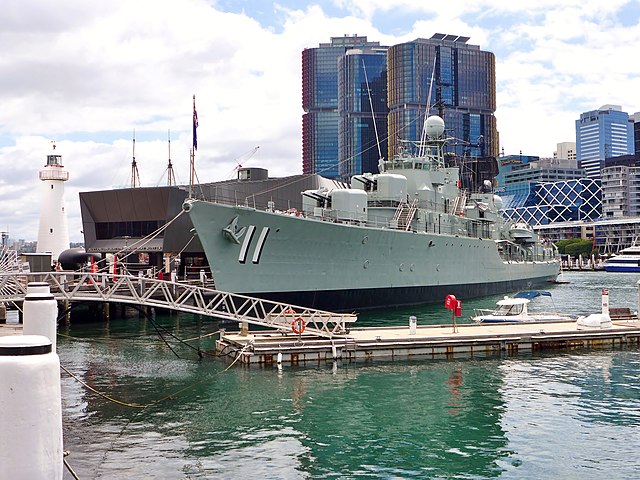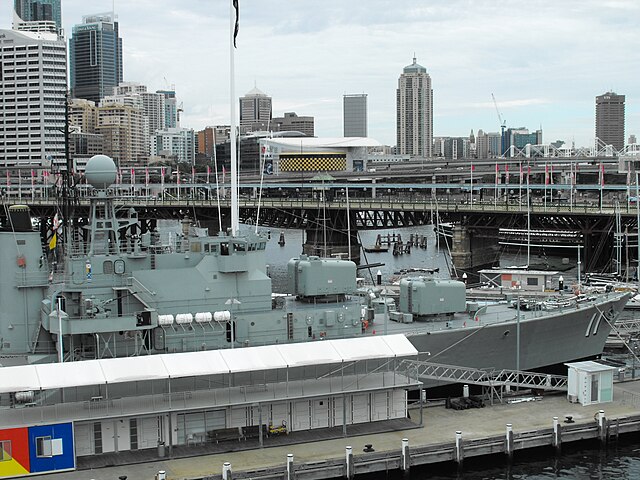Daring-class destroyer (1949)
The Daring class was a class of eleven destroyers built for the Royal Navy (RN) and Royal Australian Navy (RAN). Constructed after World War II, and entering service during the 1950s, eight ships were constructed for the RN, and three ships for the RAN. Two of the RN destroyers were subsequently sold to and served in the Peruvian Navy (MGP). A further eight ships were planned for the RN but were cancelled before construction commenced, while a fourth RAN vessel was begun but was cancelled before launch and broken up on the slipway.
HMAS Vampire on display at the Australian National Maritime Museum
A line drawing of the Daring-class destroyer
Forward half of Vampire, showing the two forward turrets for the 4.5-inch Mark V guns, and a single 40 mm Bofors
In naval terminology, a destroyer is a fast, maneuverable, long-endurance warship intended to escort
larger vessels in a fleet, convoy, or carrier battle group and defend them against a wide range of general threats. They were originally conceived in 1885 by Fernando Villaamil for the Spanish Navy as a defense against torpedo boats, and by the time of the Russo-Japanese War in 1904, these "torpedo boat destroyers" (TBDs) were "large, swift, and powerfully armed torpedo boats designed to destroy other torpedo boats". Although the term "destroyer" had been used interchangeably with "TBD" and "torpedo boat destroyer" by navies since 1892, the term "torpedo boat destroyer" had been generally shortened to simply "destroyer" by nearly all navies by the First World War.
USS Arleigh Burke, the lead ship of her class of guided-missile destroyers.
The destroyers of the US Navy's Zumwalt-class, pictured here sailing with a Littoral combat ship (LCS) are the longest and heaviest destroyers currently in service.
The Italian Caio Duilio, belongs to the Horizon-class of Franco-Italian designed first-rate frigates.
Fernando Villaamil, credited as the inventor of the destroyer concept, died in action during the Battle of Santiago de Cuba in 1898.







